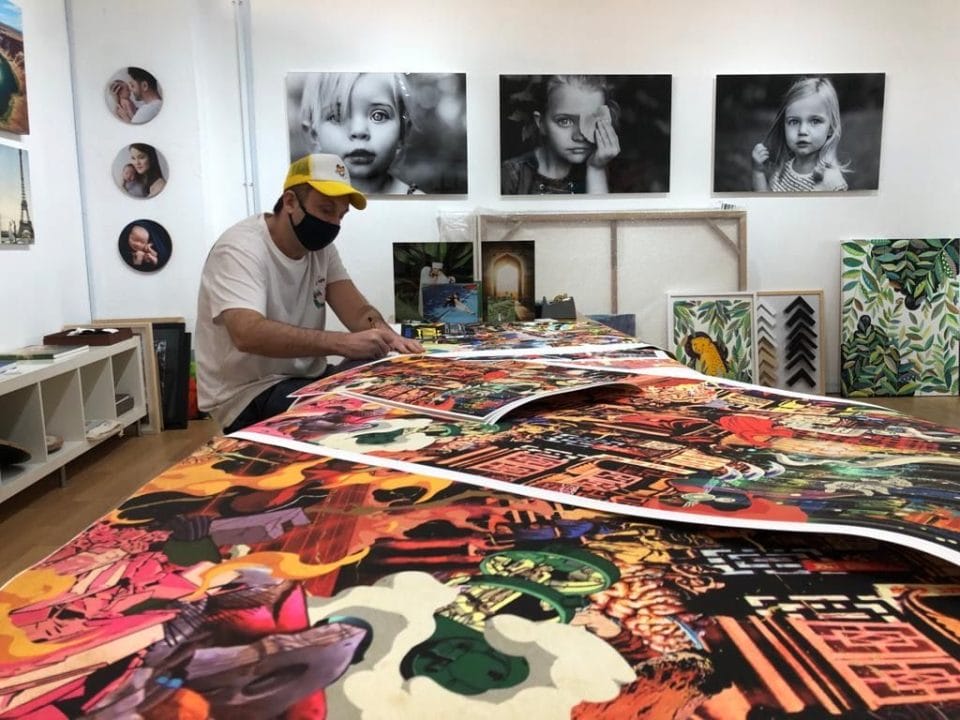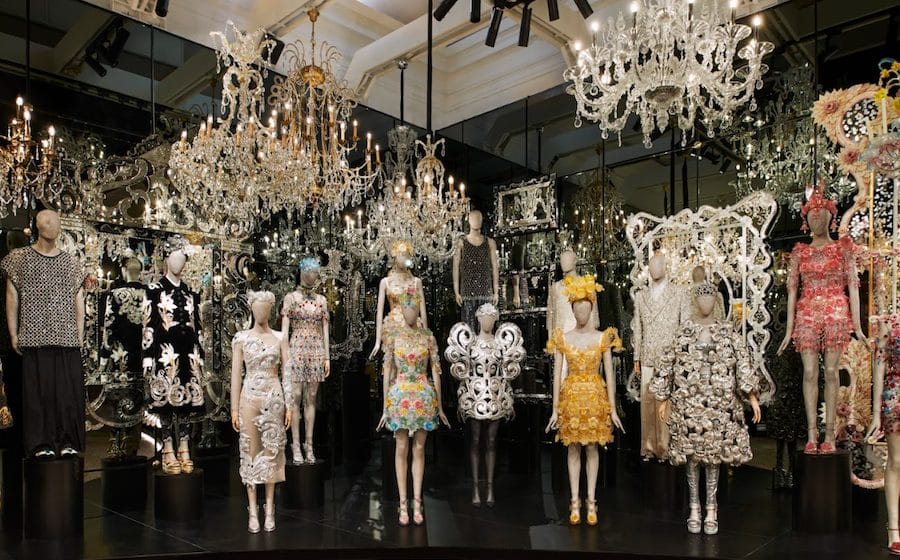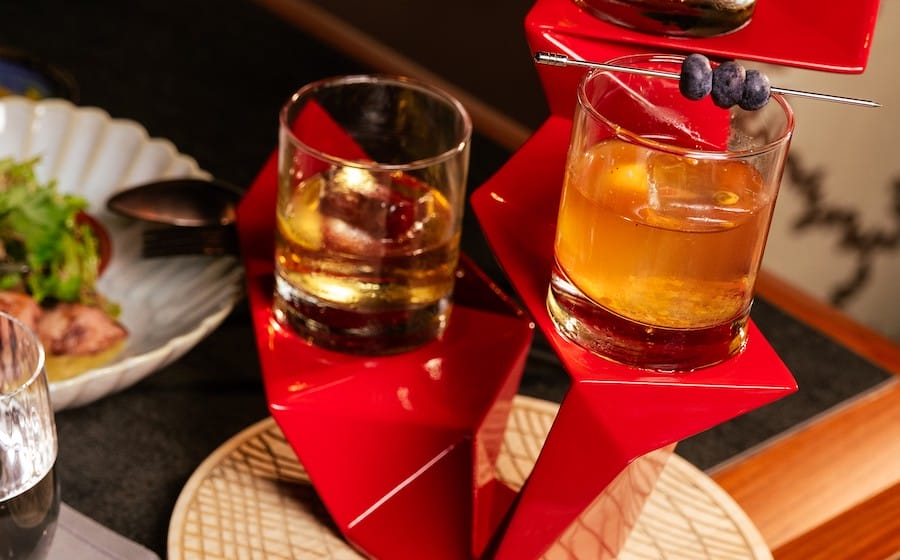
Before coining the moniker, Mojoko, before the distinguished collages that infused trash pop culture with the old and historical, and before becoming the creator of Kult Magazine — he was Steve Lawler.
—
You were born in Iran, spent your youth in Hong Kong but you are British. Why does the middle country seem to have a long-lasting influence on your art?
Hong Kong was an overload on the senses — the neon lights, the volume of people, the sights and smells were intense.
The energy is infectious and the juxtaposition of Western and Asian culture was everywhere — Chinese movies with English subtitles or Rambo movie posters with Chinese typography. I found it fascinating and still do.
There is definitely an air of nostalgia about it for me, but it was so futuristic and still does feel like one of the most exciting cities in the world.
—
—
Do you still feel British despite having lived in Asia for so long?
I think I have a British sense of humour, but I’m not particularly patriotic about the UK. I still look to it as a benchmark for creativity and quality content, but I do enjoy a global perspective on all things like music, art and film.
The former includes Mick Jagger, David Bowie, Kim Wilde and Boy George — UK icons who still resonate with the modern times.
—
Mojoko sounds funky and father universal: like it could come from Japan, Indonesia or Nigeria. When did you adopt this artist name and where did it come from?
Actually, the name comes from the printing process CMYK.
I was playing with colour values on my computer and I noticed M=0, Y=0, K=0. It just resonated with me, and yes it felt like it could be African or Japanese or Indonesian.
I loved that versatility of the moniker.
—
—
Your art is strongly inspired by B-movies, trash television and alternative culture. When did it all begin?
I think it was born by my rejection of the mainstream. I always hated pop music and big Hollywood films and found alternative music and culture much more exciting and unusual.
For example, in a VHS video rental store, I was much more enamoured by the graphics and titles of the weird sections than the blockbuster films — they were much more intriguing and explicit.
—
If you were to name one mentor who has inspired you in your path as an artist, who would that be?
During my second year at university, we had a film module which was led by Dr Chris Mullen.
He introduced me to the visual telling of stories and the world of alternative cinema and he was also the most knowledgeable person across so many subjects.
—
Tell us more about your incredible collection of comic books, 1980s advertisements and B-grade movie posters you have amasssed over the years. When did you start to collect them and are these still easy to find? Are you looking for references and inspiraiton online now?
I must have started collecting around the late 1990s — everything from Rave flyers, typography, vintage catalogues and that just became a habit to seek out the obscure things in flea markets and jumble sales.
I used to make scrapbooks and anything that was not cut up was put into a filing system. I still search for new (old) things because that’s what keeps me going and triggers inspiration.
—
Which is your favourite medium to work with? Have collages always been at the very core of your creative process?
Everything I do has an element of a collage — it’s the interplay between two separate ideas that creates a spark. The creative process is very much started by linking two previously unlinked ideas.
This idea multiplies with more and more elements, so the trick is to try and control or guide it so that your concept or theme is understood. And yes, the internet has become a valuable resource for finding things.
But in Asia, there is very little 1960s or 1970s Asian pop culture documented online so you have to dig for those the old fashioned way.
—
View this post on Instagram
—
You love large scale installations as well as showcasing them in unconventional places. You have worked in Singapore, Tokyo and Taipei but are there other capital cities you would love to work and exhibit in?
I would be happy to have more shows in Europe — Paris, London and Amsterdam for example. I have sold works there to some great buyers but never had the opportunity to showcase there. I look forward to that.
—
You have been in Singapore for over 13 years. What are your thoughts on Singapore’s art and design scene and what would you like to see more of?
I think the biggest problem is and will continue to be, is that artists can’t afford spaces to create and show work. The scene is primarily gallery- driven, which means that non-commercial work has very little opportunity to grow its influence.
Artist-run spaces are always where you see the most progressive work, and we (the community) should recognise and try to nurture that.
—
What are other countries in South East Asia that attract you in terms of their artistic vibes and scene?
I have always loved the visual power of works from the Philippines and Indonesia. They would be my favourite South East Asia countries, closely followed by Thailand. I would have to say that Korean art has excited me the most over the years. It always pushes forward because there is a real thrust for originality that seems to be a driver there. In terms of medium and subject matter, their harnessing of kinetic sculptures and craft is most impressive.
—
You are a favourite amongst many art collectors across South East Asia. Are some of your artworks already displayed in museums?
I have had a number of works featured in museums but most of them were temporary. The Singapore Art Museum has been my biggest patron when it comes to the commissioning of digital installations and sculptures over the years.
I have some museum projects in the pipeline but they are still under wraps for now.
Photo credit of Mojoko Brilliant Prints
This story is slated to appear in the August ’20 issue of Men’s Folio Singapore.








